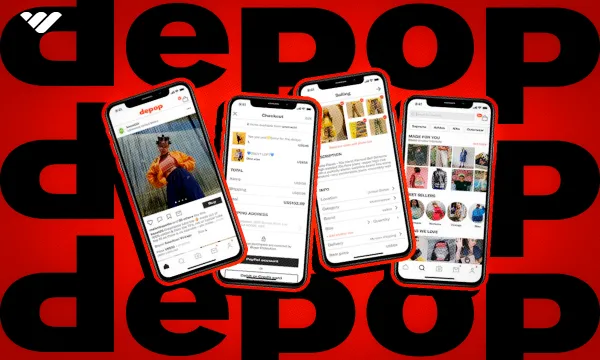Whether you're a fashion entrepreneur or just someone with a closet full of pre-loved clothes ready for reselling, Depop is a social media-like marketplace that offers a unique opportunity to turn your fashion finds into a thriving business.
And if you really want to know how to make a profit on this platform, first you need to know how it operates.
Keep reading and find out everything you need to know about how to sell on Depop.
What is Depop?
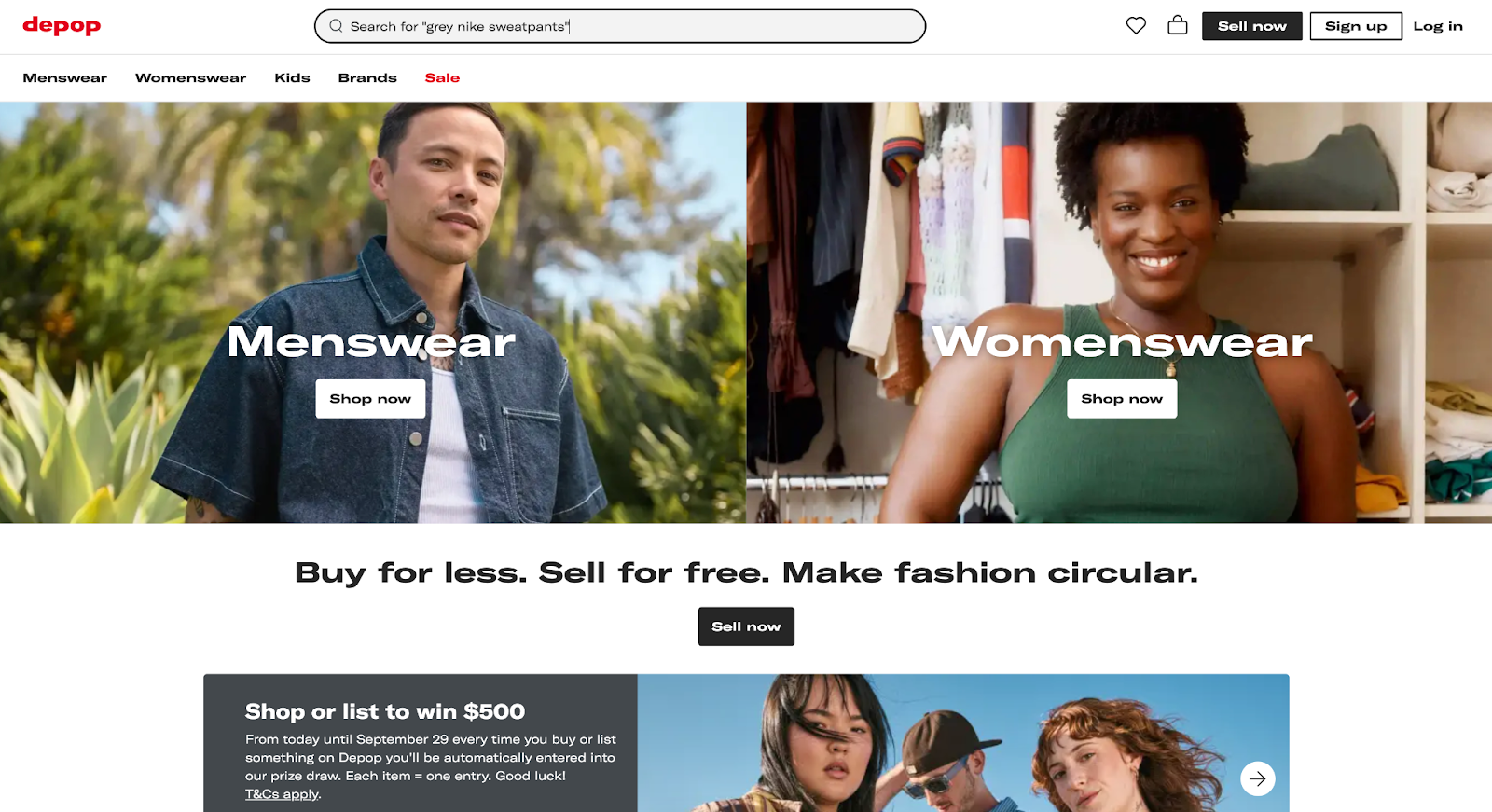
Depop is a mobile-first, peer-to-peer social shopping app primarily focused on fashion and lifestyle. With around 35 million registered users, Depop combines ecommerce with a social media experience, allowing users to buy and sell items, follow other users, and engage with the community by liking and commenting on posts.
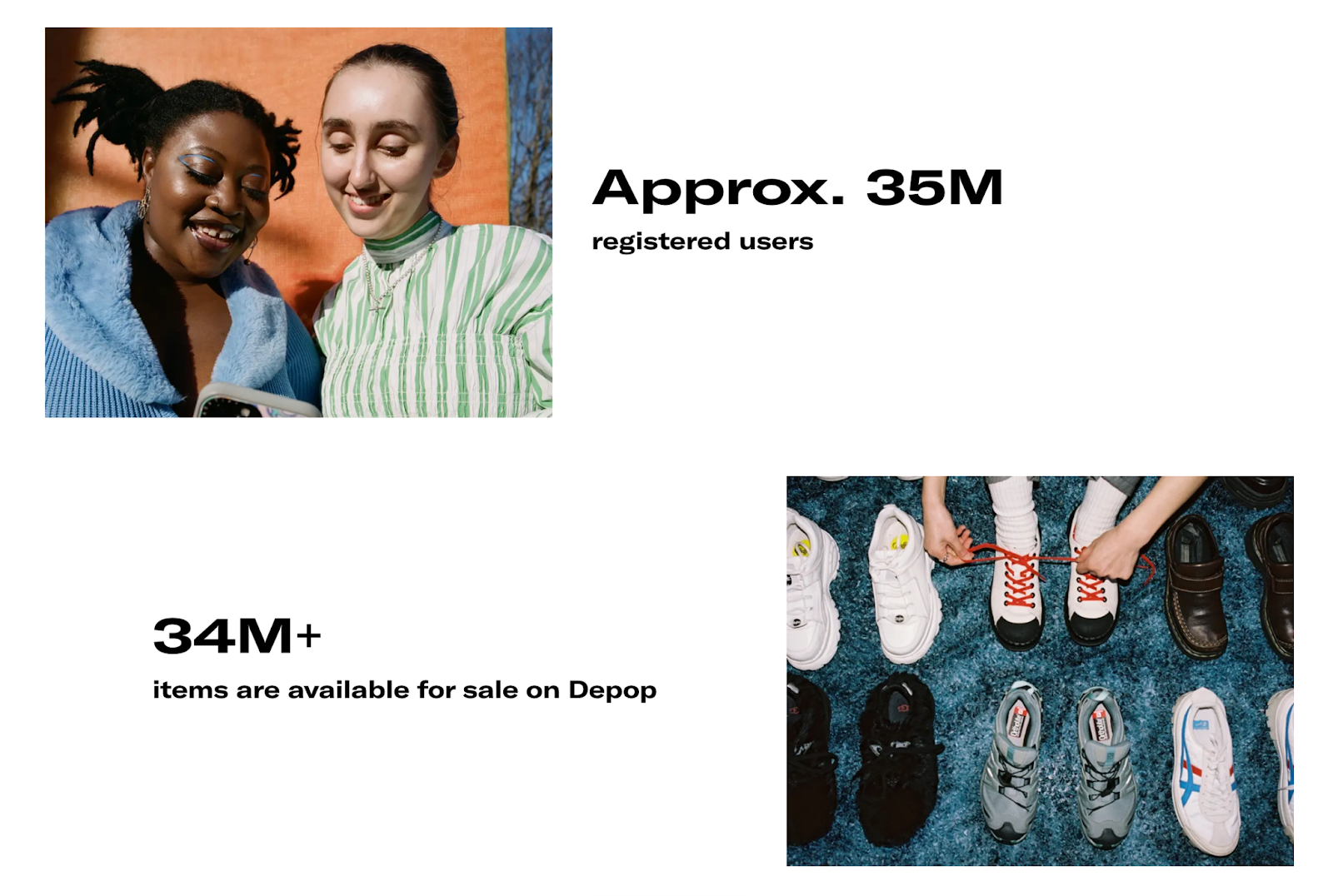
While very similar to other social platforms like Poshmark, what sets Depop apart is the fact it blends ecommerce with a vibrant community focused on clothing, shoes, and accessories in general, making it an attractive platform for selling unique or pre-owned items while also building an engaged audience.
Why Should I Sell on Depop?
Selling on Depop can be highly beneficial, particularly for businesses focused on younger audiences and buyers interested in fashion or second-hand goods. Some of the best reasons to consider Depop is:
It Has a Fashion-Focused Audience

Depop primarily focuses on fashion, particularly vintage, streetwear, and unique or handmade items. Whether you’re selling rare items or curating trendy looks, you’re more likely to find an appreciative and engaged audience of people actively looking for products in these categories.
The app attracts fashion-savvy buyers who are looking for distinctive, stylish, and trendy pieces. And because it’s a smaller platform, you won't have to deal with as much competition as other larger marketplaces, such as Amazon or eBay. Focusing on a specific niche also helps to retain loyal customers for your business.
Offers a Social Shopping Experience
Depop is not just an ecommerce platform, but also a social media-like space where you can build a brand, interact with buyers and grow a following. Like Instagram—the social media app that Depop is based on—users can follow you, comment on items, like posts, and share them. This growing engagement helps sellers form connections with their buyers, leading to repeat customers.
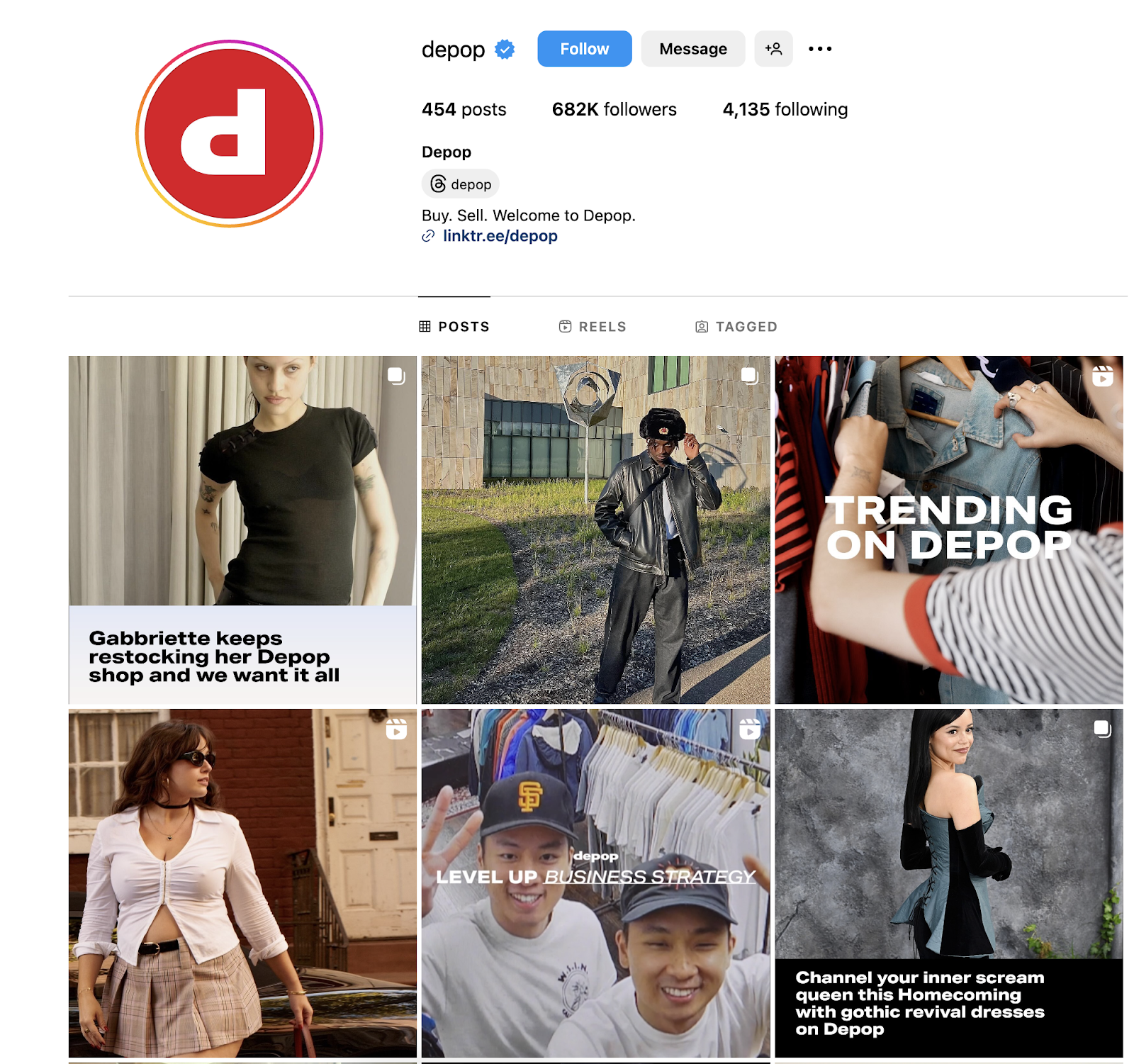
Depop profiles look similar to Instagram feeds, so you can curate your shop to reflect your personal style. Even as a solo seller, it’s totally possible to build a recognizable brand inside the platform by sharing aesthetically pleasing photos, using a custom brand voice in your descriptions, and engaging with followers consistently.
Many successful Depop sellers leverage their influence by growing large followings and becoming known for their unique collections. Some even manage to collaborate with Depop itself or gain partnerships with popular brands.
Focus on Sustainable Products
The marketplace has a strong emphasis on sustainable fashion, which has made it especially popular with younger generations, as more stylish types of clothing and eco-friendly products have become a popular trend among this demographic in recent years.
Like other peer-to-peer selling platforms, like Facebook Marketplace and Poshmark, Depop supports a “circular economy,” where clothing is reused and recirculated instead of discarded.
Many sellers use Depop to showcase their handmade products, like custom clothing or accessories, making the platform a good alternative to Etsy.
Ease of Use and Low Barriers to Entry
Depop is designed for simplicity and ease, making it a great platform for new sellers or small-scale businesses. You can list items quickly by taking photos, writing short descriptions, and setting prices directly from your phone.
Also, there are no upfront costs to start selling on Depop. Since its base is in the UK, the marketplace charges selling fees differently in the US and UK.
- For sellers based in the US, the Depop fees are 3.3% + $0.45 for each sale.
- For sellers based in the UK, the Depop fees are 2.9% + £0.30 for each sale.
With low fees compared to many other marketplaces, and integrated shipping options in certain regions, Depop sellers can scale their operations significantly.
How To Sell on Depop in 7 Steps
Selling on Depop is designed to be straightforward, especially for beginners. Here’s a step-by-step guide to help you start your own online shop on Depop.
1. Create Your Depop Account
Depop is primarily a mobile app, though it also does have a website. You can download it from the App Store (iOS) or via Google Play (Android).
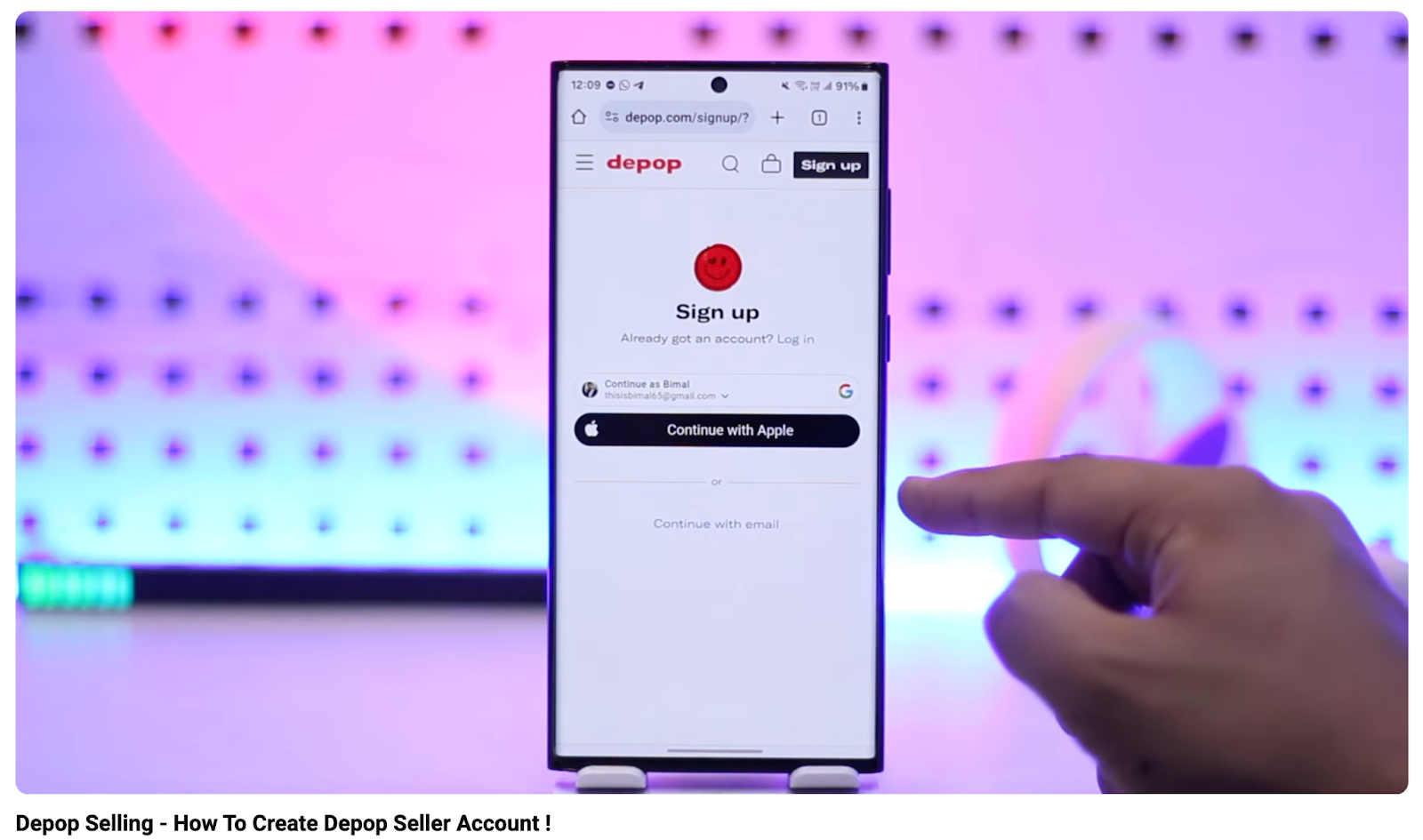
After downloading for mobile, you need to create an account using your email address, phone number, or connect using a Facebook or Google account if you prefer. Be sure to choose a unique username that reflects your brand. For example, if you’re selling vintage clothing, you might want a name that hints at that niche. Adding a clear and engaging bio that effectively explains what kind of items you sell is essential to attract the right audience as well.
2. Set Up Your Store
Your Depop profile acts as your storefront in the platform, so when creating it add a professional profile picture to create a trustworthy image for your online store. In your bio, include a brief introduction about yourself as a seller or your brand, what types of items you sell, and details any specific policies (like shipping or returns).
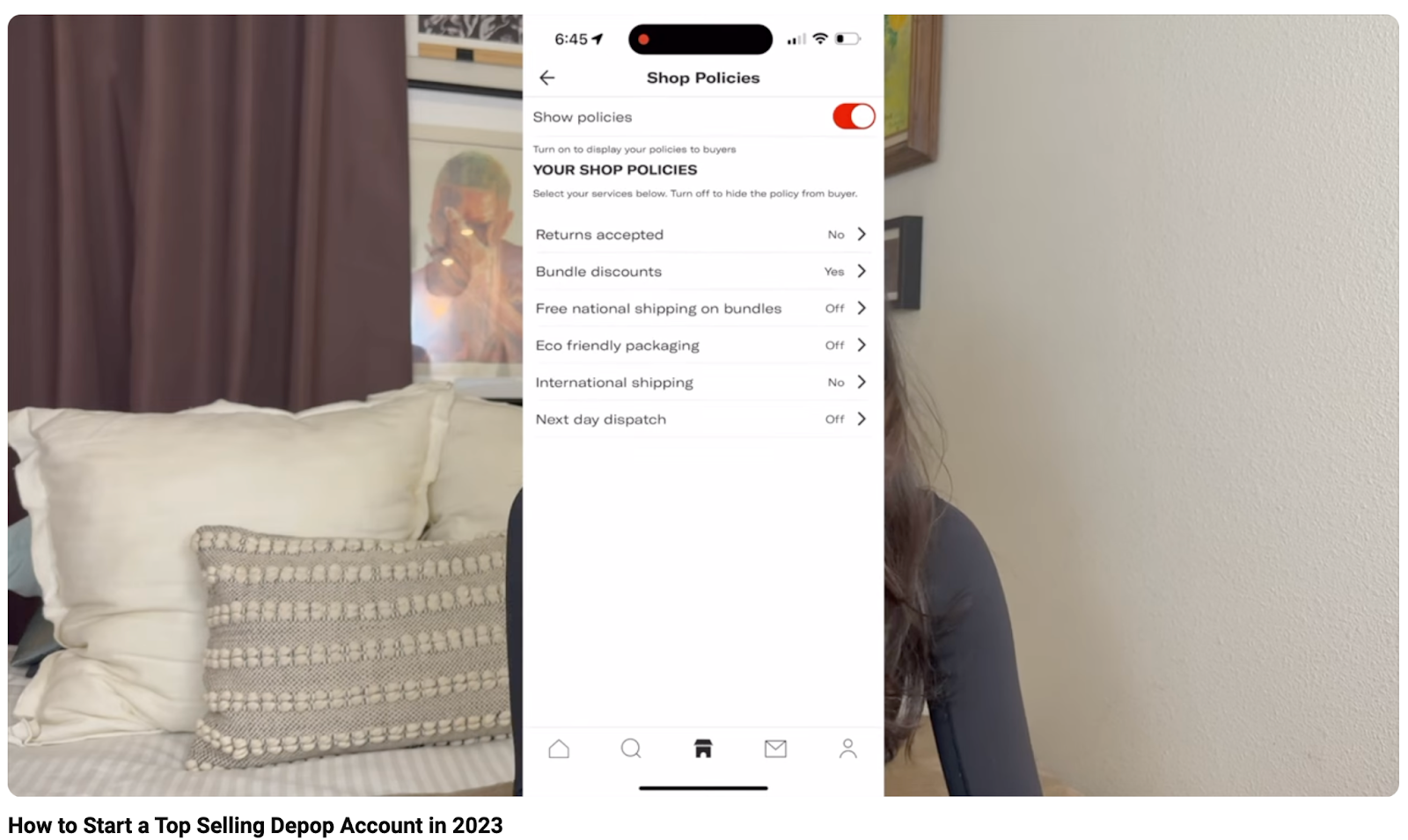
It’s also a good practice to link your social media accounts or other platforms. Depop is a social platform as much as it’s a selling one, so the more you engage with your audience the better it is for your business.
3. Create Your Listings (Item Descriptions and Pricing)
Depop is a highly visual platform, so good photos can be a crucial point when presenting your products. When showcasing your items, make sure your items are clearly visible and take photos from multiple angles: front, back, and close-ups of any details like logos, patterns, or possible imperfections (especially if it's a second-hand item).
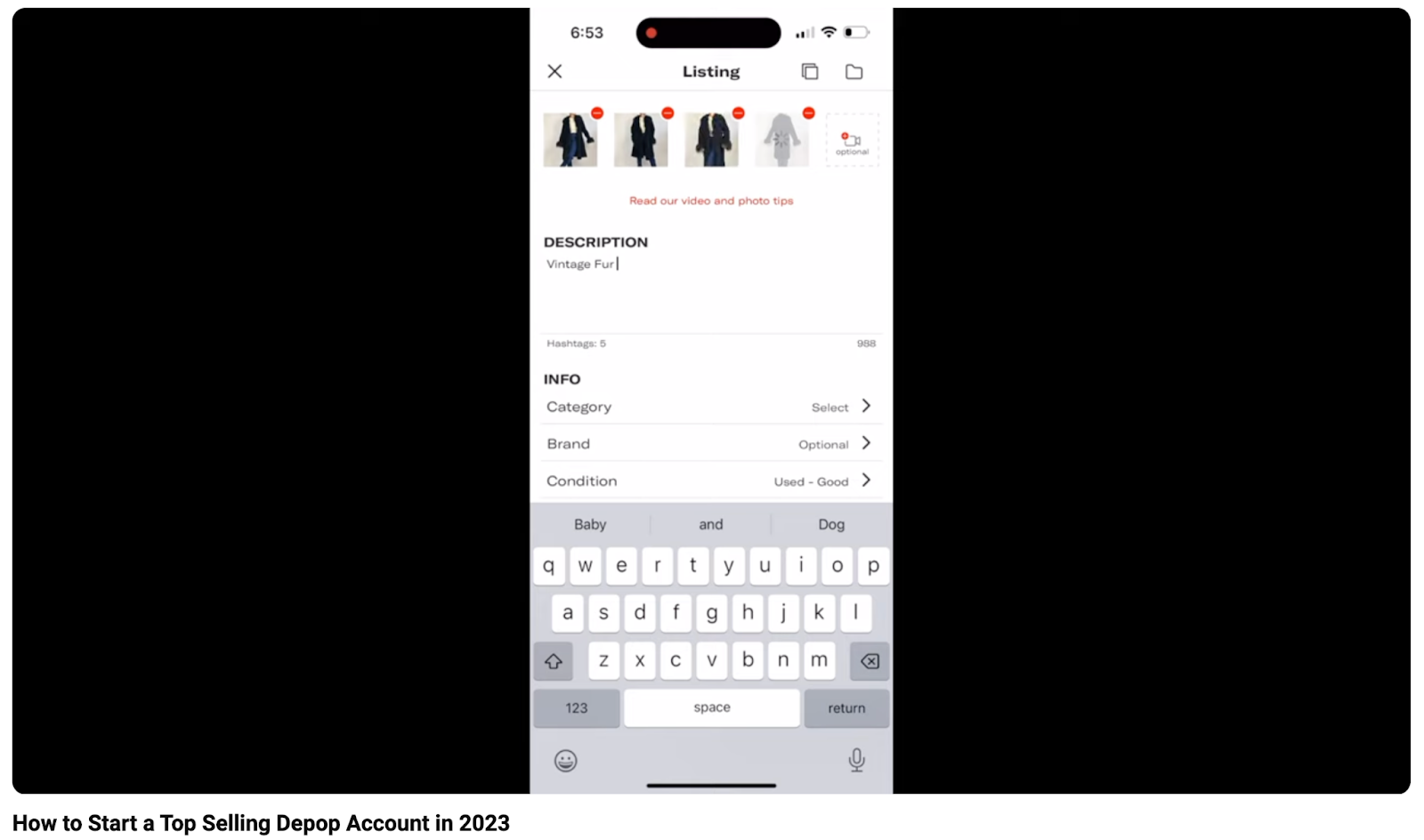
If you’re selling clothing or accessories, a good tip when making the listings is to include photos of the items being worn or styled. This helps buyers envision how the item looks in real life.
Also, write detailed titles and descriptions. The titles of your listings need to be informative and transparent. Include important keywords, such as brand name, item type, size, and material. For example, “Vintage Tommy Jeans - Size 28” is a more effective title for a product than something like “Well conserved jeans.”
As for descriptions, present information such as:
- Condition (new, used, vintage, etc.).
- Sizing details (size, fit, measurements).
- Material or fabric.
- Brand and any distinguishing features (like unique patterns or limited edition).
- Mention any flaws, even if they are minor. Transparency builds trust with buyers.
For your prices, set the values based on the condition, rarity, and demand for your items. To make sure your prices are competitive, take a look at similar items on Depop. Despite that, an overall tip on this type of platform that allows social interactions—and bargains— between users is usually to set your prices a bit higher to leave room for negotiation. Last but not least, don’t forget to properly set the shipping options for your listings.
4. Manage Shipping
When it comes to shipping products, Depop sellers can do this independently (shipping the products themselves), using a third-party delivery service (like a private courier, for example), or using Depop's integrated shipping function, the "Ship with Depop".
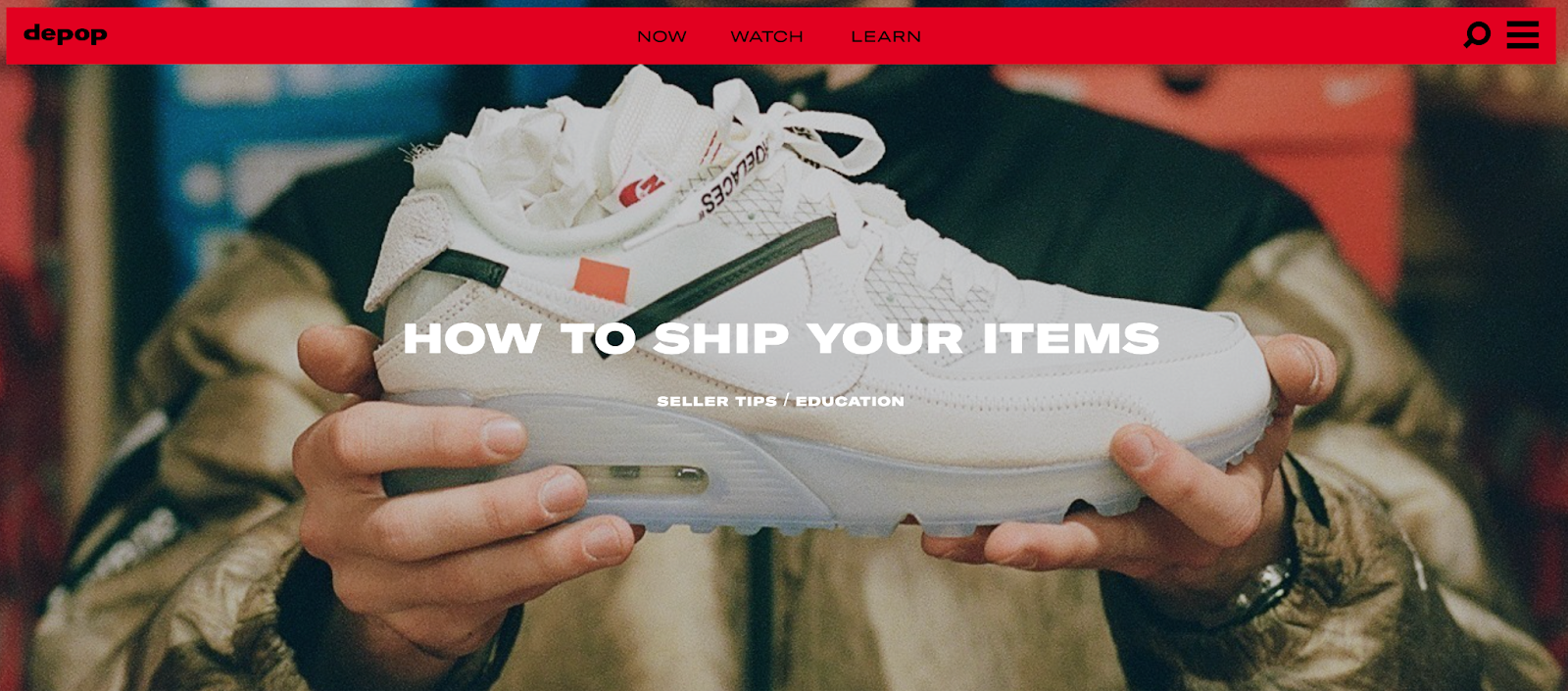
When shipping the items yourself, you can either offer free shipping (building it into the price of your item if you want) or charge the buyer for shipping. There are no fees when shipping yourself, but you need to handle the product package and make sure it arrives quickly.
Depop offers shipping services, but not for all regions. When choosing “Ship with Depop” for your products, you can purchase and print shipping labels directly from the app, simplifying the process. Make sure all the shipping information is properly detailed on your profile. Also, always provide tracking information for the buyer once the item is shipped.
5. Promote Your Items
Depop is a highly social marketplace and promoting your listings is key to having a successful business on the platform. So like, comment, and follow others within your niche to increase visibility. The more engaged you are in the Depop community, the more likely others will discover your items.
Since it's similar to Instagram, hashtags are a powerful tool to make your listings easier to find on the platform. Depop allows you to add up to five hashtags per listing, so choose relevant and popular tags to help your items get discovered.
Depop also has its own features that allow your product listings to perform better on the marketplace, such as the option to create videos on product listings and the "boosted listings" feature, which boosts the visibility of a product listing for a small fee.
6. Complete the Sale
Depop uses PayPal to handle payments (and you need a PayPal account to buy shipping labels by the way) offering protection for both buyers and sellers. Once an item sells, Depop will hold the funds in your PayPal account until the item is shipped and confirmed delivered.
7. Build Your Brand
Depop can be a very profitable marketplace for sellers who know how to preferably build their brands on the platform. For that, the first step is to stay active, regularly listing new items and updating the profile. Being active keeps your shop visible and engaged in the Depop algorithm.
Engage with your audience, and encourage buyers to leave feedback after a successful sale. You need to respond quickly to any inquiries and offers. Be open to negotiations but set your final prices right. Know the value of your product, but be fair to maintain your reputation as a reliable seller.
Who Can Buy and Sell With Depop?
Depop is designed for a wide range of users, but it has gained popularity among certain groups due to its unique focus on fashion, creativity, and sustainability. Depop is best for:
- Fashion Enthusiasts: People passionate about unique styles, whether vintage, streetwear, or current trends.
- Vintage Lovers: Shoppers and sellers who are into retro or vintage fashion.
- Streetwear Fans: Enthusiasts of streetwear brands (like Supreme, Nike, Stüssy).
- Sneaker Collectors: Buyers and sellers focused on rare or limited-edition sneakers.
- Creative Designers and Artists: Independent creators who design and sell handmade, custom, or one-of-a-kind fashion pieces like jewelry, clothing, or accessories.
- Resellers and Entrepreneurs: Small business owners or individuals looking to sell curated items, either second-hand or brand new, and make a profit.
How to Make the Most Money on Depop
To succeed as a seller on Depop, adopting some key practices can help you stand out, attract buyers, and maximize your sales. Here are some strategies to help you thrive on the platform:
Take High-Quality Photos
Use natural light whenever possible to highlight the colors and textures of your items. Avoid dark, grainy photos, as they can deter buyers. Also, show the front, back, sides, and any important details (e.g., labels, stitching, fabric close-ups). If there are any flaws or damage to the item, take close-up photos of them.
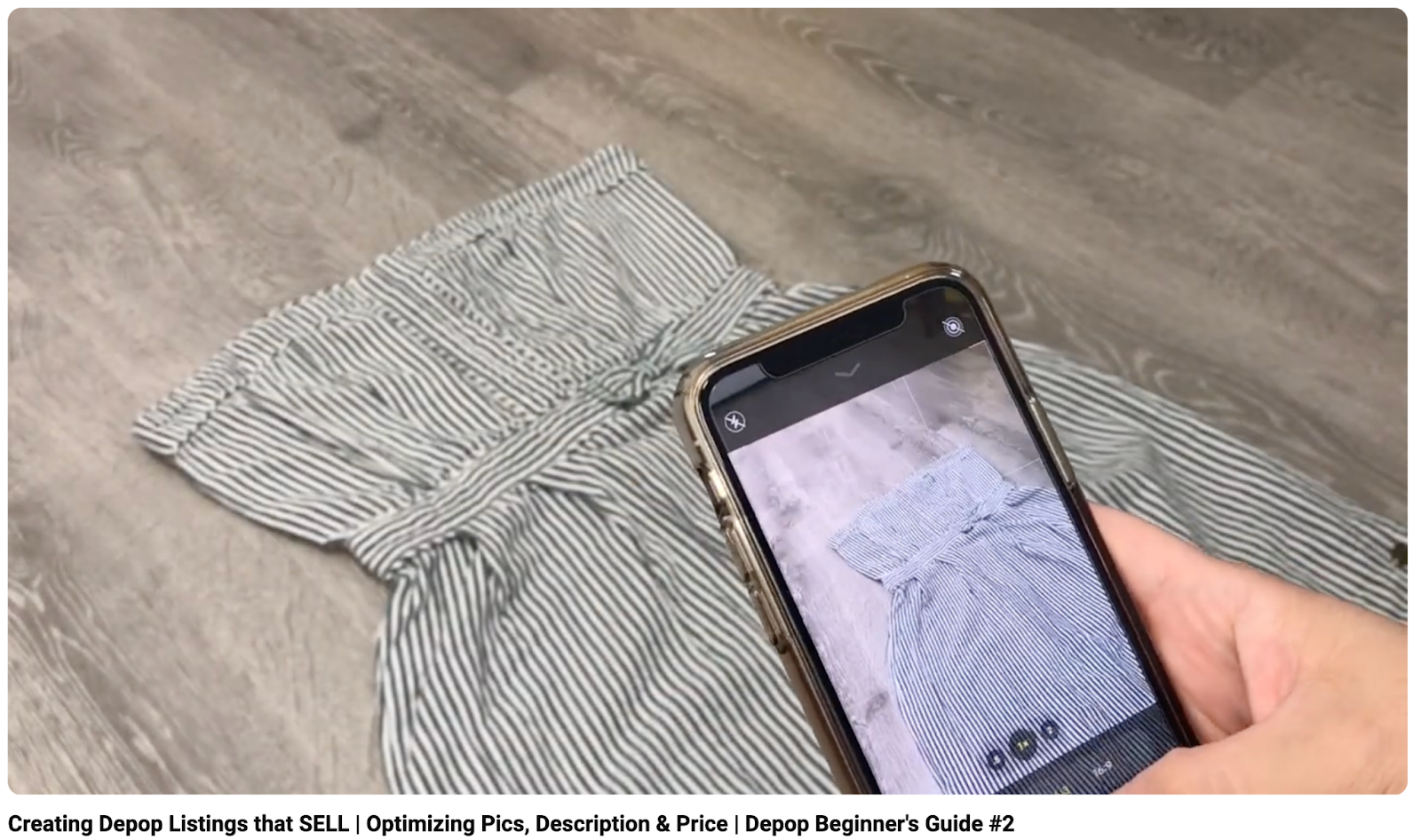
As mentioned, a good strategy is to show your products in a real scenario, so if possible, take photos of a model, or a mannequin, using your items. Flat lays (items laid neatly on a flat surface) are also effective for showcasing clothing and accessories.
Write Clear and Detailed Descriptions
Write descriptions that include size, measurements, material, brand, condition (new or used), and any notable features. If the item has flaws, be upfront about them. Mention any wear and tear, marks, or defects to set accurate buyer expectations.
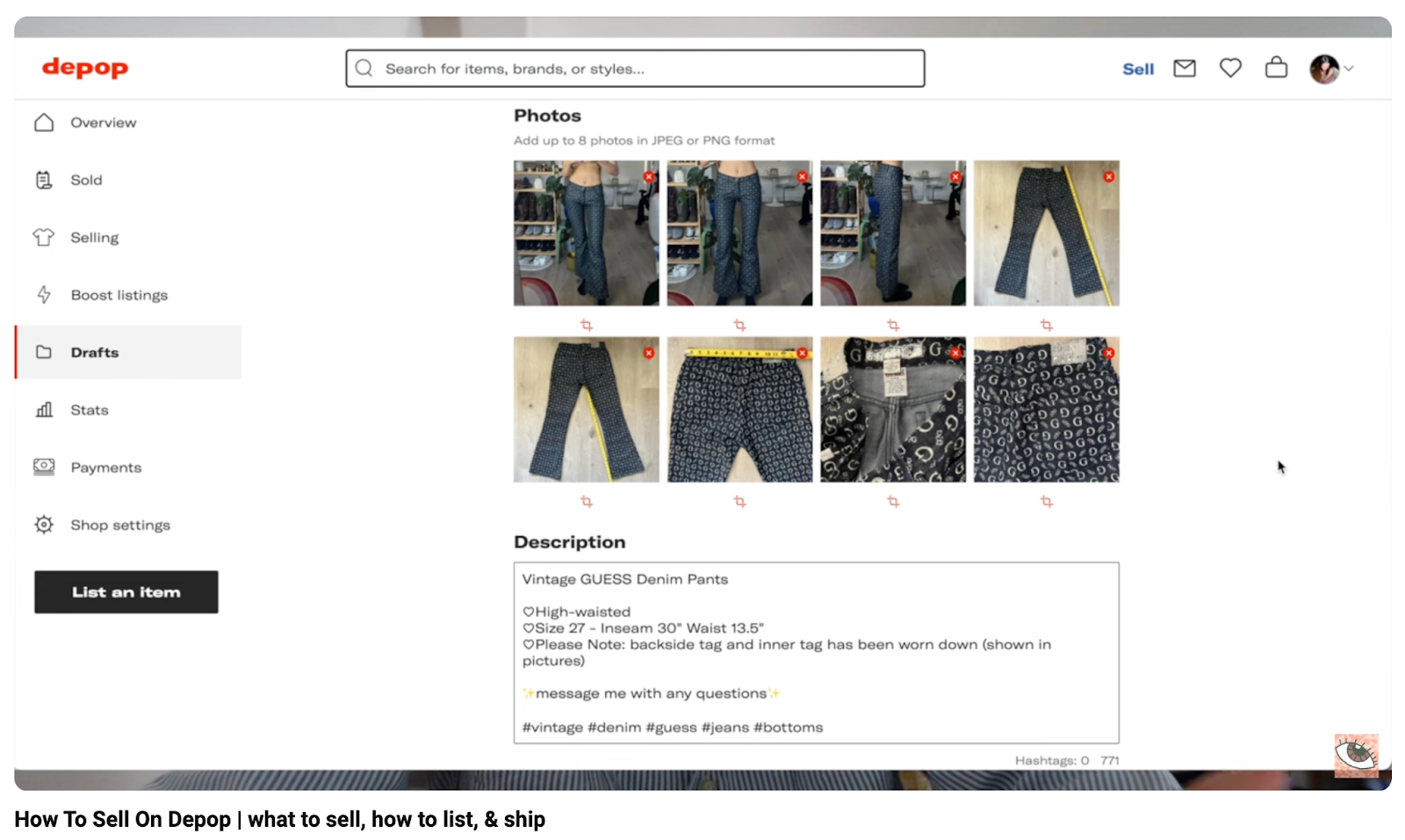
Include relevant keywords to improve search visibility. For example, “vintage,” “Y2K fashion,” or “streetwear,” or popular brand names.
Create a Cohesive Aesthetic
As said before, Depop is a highly visual platform, so to stand out you need to develop a consistent style for your shop, whether it’s through the types of items you sell, your photos, or your shop layout. Use your bio to describe your shop’s niche, your style, or any important policies (e.g., shipping times, return policies).
Analyze Your Sales and Trends
Keep track of which items sell the fastest and adjust your inventory accordingly. If vintage pieces are more popular than streetwear, focus on sourcing and listing more vintage items. Track your performance by regularly checking your sales stats to understand your performance. Look for trends in what types of items, price points, or descriptions work best for you.
Is Depop Worth It?
Despite being an increasingly popular marketplace for sellers, Depop also has garnered criticism from many users due to the many cases of “bad thrifting” on the platform, when sellers buy clothes from thrift shops (or charity shops) and resell them on Depop for much higher prices than they were purchased for.
However, this is a common practice on platforms dedicated to selling second-hand products. It may seem like a profitable sales method, but it can also mean a loss of reputation for sellers who end up overpricing their products.
Learn How to Master Ecommerce With Whop
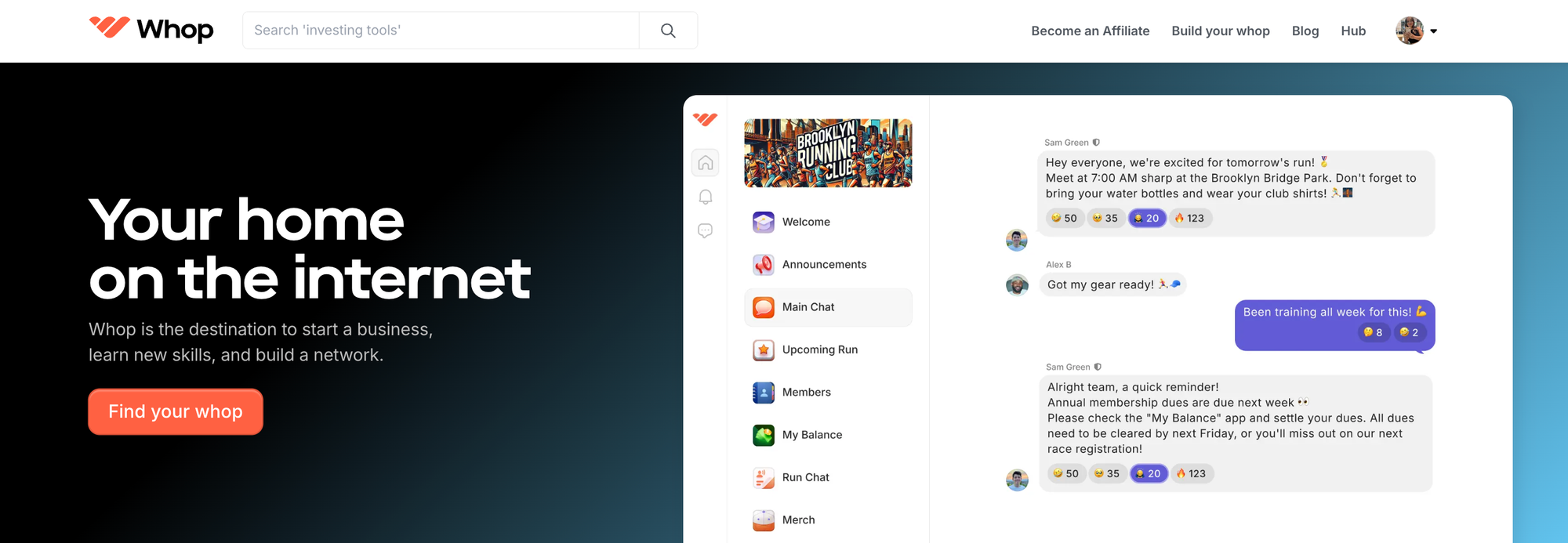
Do you want to learn how to make money on Depop, Amazon, Etsy, or any other ecommerce platform on the internet? With Whop you can do that and much more.
Whop's courses and communities teach you everything you need to know. All you need to do is visit the Whop Marketplace, find a community and start learning. We have plenty of resources for dropshipping, sneaker reselling, Amazon FBA, and more, all led by experts who have found great success selling products online.
It takes just a few minutes to start changing your life. Join Whop and start learning (and earning) today.
How to Sell on Depop FAQs
The most frequently asked questions about how to sell on Depop.
Is Selling on Depop Profitable?
Yes, selling on Depop can be profitable, but success largely depends on a few key factors. These include the types of items you sell, how well you price them, and the effort you put into promoting your shop. Sellers who specialize in trending categories like vintage fashion, streetwear, or sustainable items tend to do well.
Why You Should Trust Us
Joe Niehaus is an ecommerce expert and seasoned content writer at Whop. He brings a wealth of experience in overseeing affiliate programs for ecommerce brands and has contributed his knowledge to leading publications like Travel + Leisure, GQ, and Business Insider.
